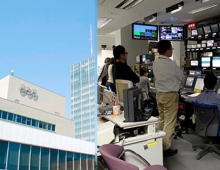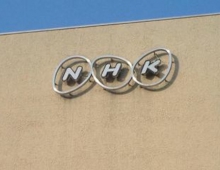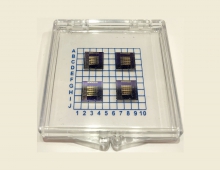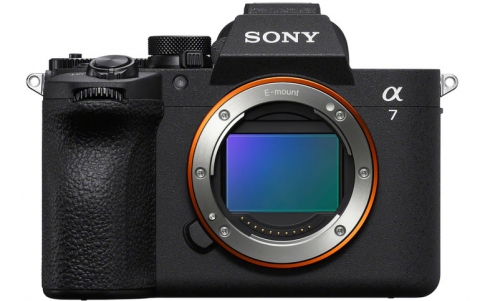
NHK and Mitsubishi Develops Digital Watermarking Technology to Prevent Movie Piracy
NHK's Broadcasting Science Research Laboratory and Mitsubishi Electric have jointly developed a digital watermarking technology for moving pictures, that prevents illegal recordings in cinemas.
Although digital technologies raise the efficiency of new content production, pirates also accelerate their piracy. Today's commercial cameras have become sufficient enough to re-shoot images displayed on screens, and TV monitors are becoming larger with better picture quality. This combination enable content to be pirated in the home or in movie theaters.
Re-shooting with a commercial camera is the ultimate piracy method because there is no engineering way to stop it. The Japanese companies have developed a new watermark method that remains even after images displayed on a monitor have been re-shot. The "Digital watermarking" technology is capable of embedding copyright information in a video stream. This information is not detected by the human eye in a movie theater but it is visible when a pirated (taped) movies is reproduced.
The companies said that the technology could be also applied to digital broadcastings. If a person copies the film at a cinema or in front of a television screen, his or her camera will automatically tape the signal which will stay in the machine's memory. Automatic software can then search the Internet using the coded signal to find any works that have been illegally copied.
"The signal will stay and can be traced, even if only part of the image is put on line," NHK, the Japanese initials for the Japan Broadcasting Corp., and Mitsubishi Electric said in a joint statement.
The technology could bring changes in the video production business, which has long been plagued by illegal copying and distribution.
Re-shooting with a commercial camera is the ultimate piracy method because there is no engineering way to stop it. The Japanese companies have developed a new watermark method that remains even after images displayed on a monitor have been re-shot. The "Digital watermarking" technology is capable of embedding copyright information in a video stream. This information is not detected by the human eye in a movie theater but it is visible when a pirated (taped) movies is reproduced.
The companies said that the technology could be also applied to digital broadcastings. If a person copies the film at a cinema or in front of a television screen, his or her camera will automatically tape the signal which will stay in the machine's memory. Automatic software can then search the Internet using the coded signal to find any works that have been illegally copied.
"The signal will stay and can be traced, even if only part of the image is put on line," NHK, the Japanese initials for the Japan Broadcasting Corp., and Mitsubishi Electric said in a joint statement.
The technology could bring changes in the video production business, which has long been plagued by illegal copying and distribution.





















